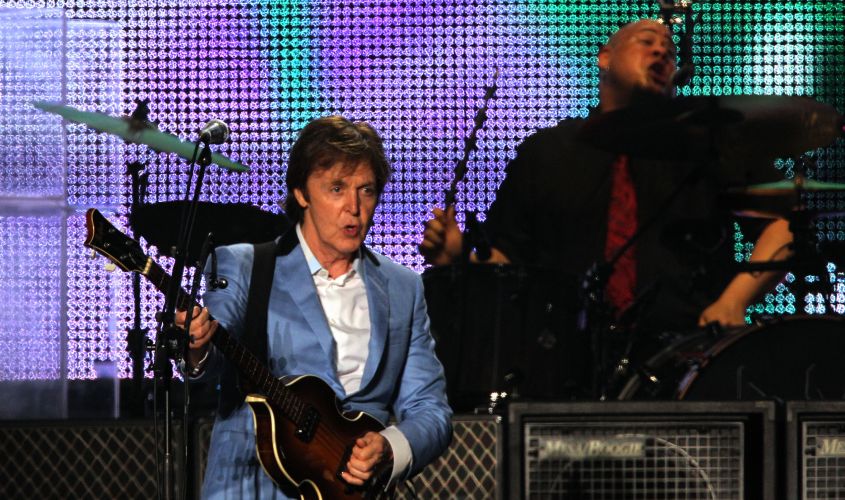

“Waterfalls” is the kind of thing you’d expect from him, a heartfelt, romantic ballad (even so, despite its success in the UK, it flopped in the states). But the next two singles illustrate how this album came to polarize McCartney fans.

“Coming Up” would be the album’s most successful single (though the US preferred the B-side, a live version of the track energetic, but not nearly as interesting as the studio version). The closer, “One of These Days,” couldn’t be more different from those high spirits, a gentle, somewhat pensive number that’s simply McCartney and an acoustic guitar (McCartney said the song was inspired by a visit from a “Hare Krishna bloke … After he left, I went to the studio and the vibe carried through a bit.”

He even spoofed his own Beatle past, donning a collarless suit and shaking his head like it was 1964 all over again (wife Linda also appears as a pair of male and female backing singers). It was matched with a delightful video, with McCartney fronting a band cheekily dubbed the Plastic Macs, with Paul himself playing most of the musicians, including a horn-rimmed glasses-wearing Hank Marvin of the Shadows and Ron Mael from Sparks. “Coming Up” has a bright, modern sound, due in part to studio manipulation that made his voice higher. McCartney bookends the album with two of its strongest tracks. And it’s precisely this mix of the conventional and the unexpected that makes McCartney II either a fun bit of experimentation or inconsistent as all get out (my first copy of the album, purchased from a used record store, had a sticker with a note from a store employee on the cover, incredulous that a former Beatle could have released something this dreadful). Not that there wasn’t a measure of typical McCartney-esque tunefulness to the album as well. Paul McCartney McCartney II, MPL/Capitol 1980
PAUL MCCARTNEY COMING UP FREE
He felt free to take the kind of chances he would have hesitated to do on a more mainstream project. Free from the need to be commercial, he was more imaginative than he’d been since the time of his own Ram album (1971) and his brother Mike McGear’s underrated McGear album (1974). He was not considering the songs for a new album he was simply recording for his own amusement. But McCartney was itching to find a new direction.Įver the workaholic, he started recording material on a 16-track Studer tape machine he had installed in his home as soon as the Back to the Egg sessions were finished, playing all the instruments himself. Two new members were duly drafted in, and Wings set about working on what would be their last album, Back to the Egg. The band’s 1975-76 world tour made them a mega act, but that lineup fell apart during the recording of the next album, 1978’s London Town. The constantly changing lineup of his post-Beatles band, Wings, meant the group never really jelled. McCartney II opened the door to new possibilities.įor all his success in 1970s, McCartney had found the decade a bit of a rough ride as well. He’d never considered going ahead without one. But McCartney II, released a decade later, signaled a new kind of freedom.įor most of his career, McCartney had always been a member of a band. McCartney (1970) was Paul McCartney’s declaration of independence from the Beatles. Macca channels Ron Mael in the bathroom (Art: Ron Hart from a photo by Linda McCartney)


 0 kommentar(er)
0 kommentar(er)
